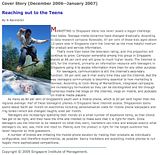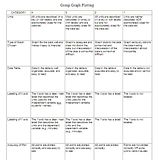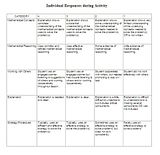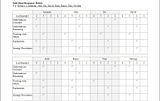The conventional way in which a student’s learning is assessed is through written tests and examinations. An alternative assessment would then be any different form of assessment used. Some examples of alternative assessments are class presentation, portfolio, journal writing, discussion, game and project.
These are examples of non-traditional approaches and they do not involve getting students to give a standard answer to a question. Instead, alternative assessment allows students to express their thoughts and perception to the given tasks.
These alternative modes of assessments provide opportunities for them to apply process skills in solving Math problems unlike traditional pen-and-paper written examinations which are unable to showcase students 'hidden' abilities.
Our Activity
In our group discussion, we have decided on an activity that allows the class to work in groups. The activity will be linked to the topic Data Analysis for Primary 5 level. From this activity, students will be able to:
- interpret average as "total amount ÷ number of items"
- do calculation of the average number/quantity
- finding the total amount given the average number and the number of items
The activity starts off with an introduction with a newspaper article about the rise in statistics with ownership of mobile phones among teenagers.

(Click on the thumbnail above to view larger image)
The class will form into groups of four where they will do a survey among their classmates and find out how many students owns a mobile phone and how much they spend on paying the bills.
The group will then compute their data into an excel spreadsheet to form a chart based on the statistics.
Examples of data tabulated in excel by 4 out of the 8 groups in a class below:
(Click on the thumbnails below to view larger images)

Group 1 
Group 2 
Group 3 
Group 4
From the statistics, the groups will have to use the data and make some conclusions about the average number of students owning a mobile phone in the class and the average amount spent on paying bills. Each individual student who owns a mobile phone would then do an individual calculation and find out if their bill is above or under the average, based on percentage. Students will then reflect and propose the possible measures they could take to cut down on the expenses.

An example of the average talktime and cost of the 4 groups in the class
Our Activity and AA
Students will get to work in groups to collect and consolidate data. This promotes communication and organization skills. Interaction is one of the key features of Alternative Assessment. Results and learning outcomes are communicated in multiple levels; i.e. among students, on written reports and presented in class. As students present their findings and conclusion, the teacher can communicate with the group verbally, making assessment less rigid or formal.
Since the whole process of solving is communicated actively, while students work on solving the problem, the teacher is able to assess the students on multiple levels as well. As he/she listens to the students’ discussions, he/she will be able to assess understanding at various points of the task. This helps the teacher be aware of what are the problem areas in learning this topic.
In addition, students are given an authentic situation, where they are also free to use methods of their choice to gather data from scratch. This is a non-passive way of learning, as students take charge of the learning task wholly. Rather than just giving students a set of fictitious data to work on, allowing them to work on an authentic situation from scratch will let them construct links between stages of a mathematical problem.
In assessing students’ performance and attitudes towards learning mathematics, rubrics catered to assess the activity will be created and used as the teacher monitors and facilitates students throughout the activity. Below are the rubrics for both group and individual assessment:
(Click on the thumbnails below to view larger images)


An example for a group's assessment 

An example of individual rubric in a group
No comments:
Post a Comment